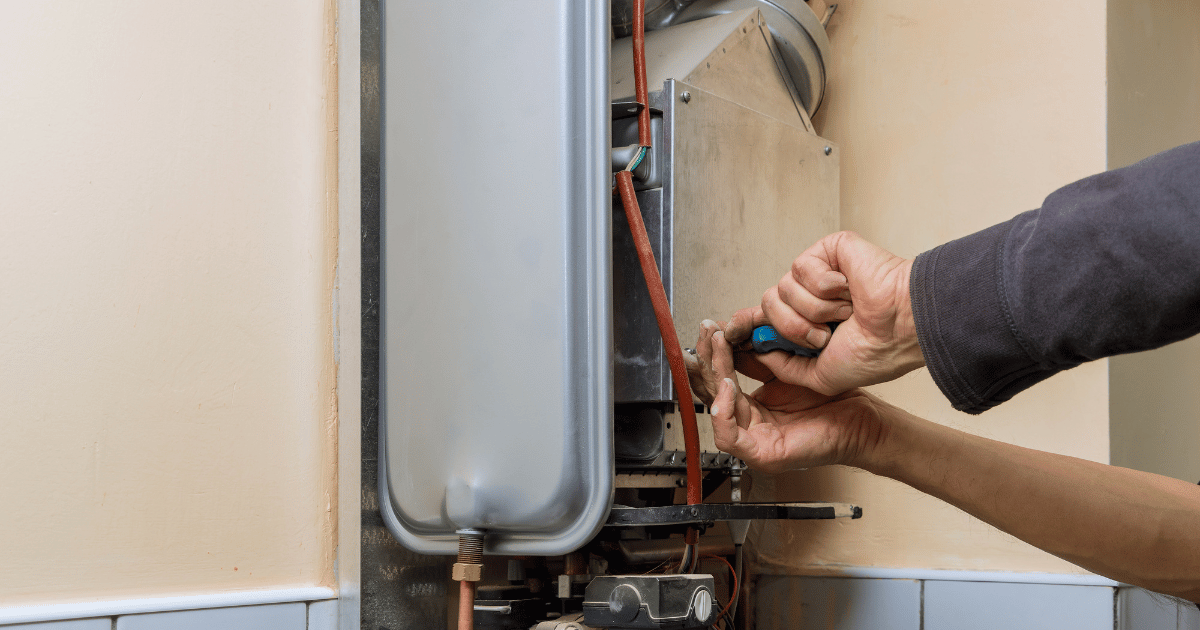Just how do you feel with regards to What Kind of Maintenance Do Water Heaters Need??

Hot water is important for day-to-day comfort, whether it's for a revitalizing shower or washing recipes. To ensure your warm water system runs efficiently and lasts longer, routine upkeep is essential. This write-up offers functional tips and understandings on exactly how to keep your home's hot water system to prevent disruptions and expensive repair services.
Intro
Maintaining your home's warm water system could appear challenging, but with a couple of basic steps, you can ensure it runs efficiently for many years ahead. This guide covers everything from comprehending your warm water system to DIY maintenance ideas and knowing when to contact specialist assistance.
Relevance of Maintaining Your Hot Water System
Routine upkeep not just extends the life expectancy of your warm water system but likewise ensures it runs successfully. Neglecting maintenance can bring about decreased efficiency, higher energy expenses, and also early failing of the system.
Indications Your Warm Water System Demands Upkeep
Recognizing when your hot water system needs attention can avoid major issues. Look out for indications such as inconsistent water temperature level, weird sounds from the heating unit, or rustic water.
Comprehending Your Hot Water System
Before diving into upkeep jobs, it's helpful to understand the basic components of your hot water system. Generally, this includes the water heater itself, pipes, anode rods, and temperature controls.
Monthly Upkeep Tasks
Normal regular monthly checks can assist catch small problems before they escalate.
Purging the Hot Water Heater
Purging your water heater removes sediment buildup, improving performance and lengthening its life.
Monitoring and Replacing Anode Rods
Anode rods protect against corrosion inside the container. Evaluating and changing them when worn out is crucial.
Evaluating and Changing Temperature Settings
Adjusting the temperature level setups makes sure ideal efficiency and safety.
DIY Tips for Upkeep
You can execute several upkeep tasks on your own to keep your hot water system in leading problem.
Looking for Leaks
Regularly evaluate pipes and connections for leakages, as these can result in water damage and higher bills.
Evaluating Pressure Alleviation Valves
Checking the stress relief valve guarantees it works properly and avoids too much pressure build-up.
Shielding Pipelines
Protecting warm water pipes minimizes heat loss and can save energy.
When to Call an Expert
While DIY upkeep is valuable, some problems require expert knowledge.
Facility Problems Calling For Professional Help
Instances consist of major leakages, electrical troubles, or if your water heater is constantly underperforming.
Routine Specialist Maintenance Perks
Professional maintenance can consist of detailed inspections, tune-ups, and ensuring conformity with security standards.
Verdict
Routine maintenance of your home's warm water system is necessary for efficiency, long life, and expense financial savings. By following these ideas and knowing when to seek expert aid, you can ensure a trusted supply of hot water without unforeseen disturbances.
Water Heater Maintenance Tips
Test the TPR Valve
Shut off the power and the cold-water supply valve. Place a bucket under the pipe connected to the temperature-pressure-release (TPR) valve on the top or side of the tank. (This valve opens if the tank pressure gets too high.) Lift the valve’s tab to let some water out, then let go. If water keeps flowing, drain the tank partway, unscrew the old valve with a pipe wrench, and install a new one. Check the Anode Rod
Put a hose to the tank’s drain cock and let out a few gallons of water. Now fit a 1 1/16-inch socket onto the rod’s hex head on top of the heater (or under its top plate) and unscrew the rod. If it’s less than ½ inch thick or coated with calcium, buy a new one, wrap its threads with Teflon tape, put it back in the tank, and tighten securely. Use this segmented rod if headroom above the tank is limited. Drain the Tank and Wash Out Sediment
Drain the remaining water in the tank into the bucket, then stir up the sediment on the tank’s bottom by briefly opening the cold-water supply valve. Drain and repeat until clean water comes out of the hose. Close the drain cock, refill the tank, and turn its power back on. Adjust the Temperature
Find the temperature dial on the side of the tank and unscrew its cover. Adjust the dial to 120 degrees using a flathead screwdriver. For every 10 degrees the temperature is lowered, you can expect to save up to 5 percent in energy costs. Turn the water heater off or the thermostat down to its lowest setting if you plan to be away from home for more than three days. Insulate the Pipes
Buy some self-sticking 3/8-inch-thick foam pipe insulation that matches the pipes’ diameter. Slide the foam over the hot-and cold-water pipes as far as you can reach. Insulating the cold-water pipe prevents condensation in summer. Peel the tape and squeeze the insulation closed. If the pipe is 6 inches or less from the flue, cover it with 1-inch-thick unfaced fiberglass pipe wrap. https://www.thisoldhouse.com/plumbing/21016402/how-to-maintain-a-water-heater

I was shown that write-up about How to Maintain a Hot Water Heater in a Few Simple Steps through a friend on another site. Sharing is caring. Helping people is fun. Thanks so much for taking the time to read it.
Course Detail